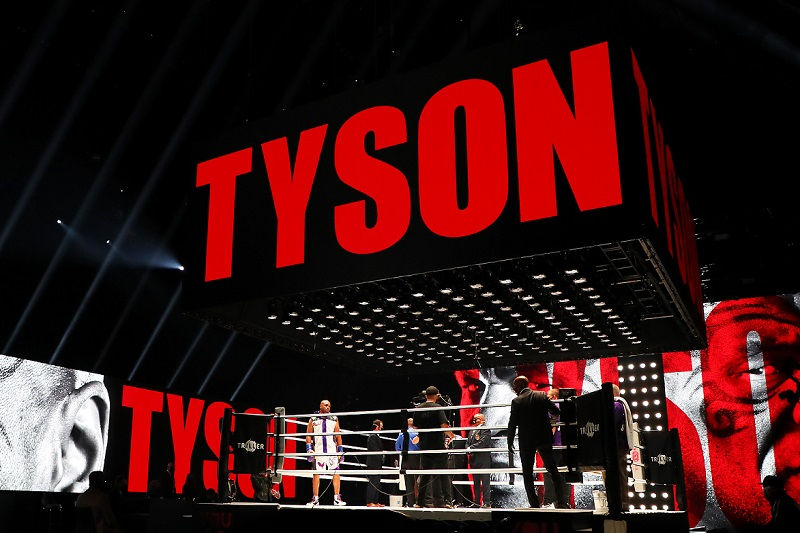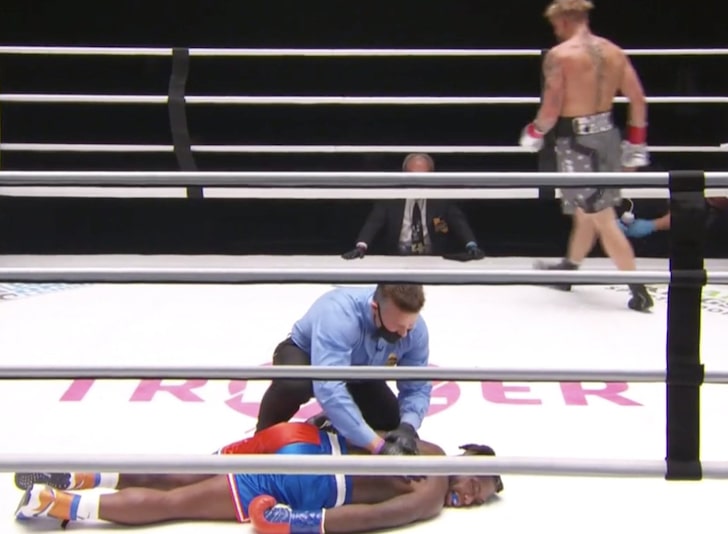What Tyson’s Boxing Bout Means for Triller
- Jordan Kelley
- Dec 1, 2020
- 4 min read
Jordan Kelley, Content Director, BrandStorytelling.tv
If you have a boxing fan in your life, you may have caught wind of the Legends Exhibition fight hosted Thanksgiving weekend by none other than Mike Tyson. If not, you probably heard about it from a millennial or Gen Z friend, co-worker, or child who eagerly wanted to share one of the many memes that came from this weekend’s fight. No matter where you heard about it, any retelling of the weekend’s events will have one mention in common: Triller.

Mike Tyson himself got in the ring on Saturday night for eight two-minute rounds of exhibition boxing with former champion Roy Jones Jr. At ages 54 and 51, the fight was entertaining without being spectacular, although Tyson’s 100lb loss and body transformation are admirable and noteworthy (the guy can clearly still throw a punch). What’s more interesting is the method by which the fight was produced and distributed. Tyson’s Legends Only League partnered with the Triller app, the AI driven video app often compared to TikTok, to distribute the fight. The fight was made available on Pay Per View, but the more emphasized opportunity in the marketing leading up to the fight was to download and watch it for free on Triller.

Triller’s involvement seemed to result in the whole evening resembling something much closer to a production made for the online generation than a traditional Pay Per View fight. What exec Ryan Kavanaugh touted as the most “highly produced fight ever” revealed itself to be one of the first of its kind – a boxing match designed for younger viewers to watch vertically on their phones. The white ring emblazoned with the Triller logo and set under hot white lights gave way to a room full of LED screens that ran graphics announcing performers and fighters and culminated in a small stage on which musicians performed. For all of its stylish flare, the stream suffered production errors including audio and visual hiccups – arguably the factor that made it feel more like an internet stream than anything else. In the end, most of the fights were fun to watch, and hip-hop fans were treated to solid performances by Wiz Khalifa, YG, French Montana, Saint Jhn, and Snoop Dogg himself (one of many artist-investors in the Triller app).

While Triller’s CEO claims the app has over 100M monthly users, it’s clear that they wanted to “eventize” the Tyson fight as a way to gain new users. Triller has yet to speak to the results of a potential uptick in downloads post-fight, and it’s unclear whether the youth audience Triller was after in making this offer downloaded and viewed with the Triller app. What is clear, however, is that Triller was at the center of producing a popular cultural moment with the bouts between Jake Paul and Nate Robinson as well as Tyson and Jones Jr.
Jake Paul made a lot of noise on the internet looking for a fight and found one with former NBA champion Nate Robinson. Paul got the outcome he was after and the internet collectively gasped as Paul knocked out Robinson in the second round. The photo of Robinson being put on the canvas has since circulated millions of times on the internet in meme form. There were also plenty of memes dedicated to the inelegant moments in the bout between Tyson and Jones Jr., being accused of looking like a couple of uncles wrestling at a backyard barbeque. Either way, it’s all free press for Triller, whose logo is right there in the middle of the ring.

What does this mean for Triller? The app was able to gain publicity through promotion of the fight, has positioned itself as open to being an event streaming platform that partners with brands, and ultimately delivered on a reasonably well executed program. They demonstrated their alignment with major artists and athletes and will undoubtedly make a claim about how many downloads and viewers they gained when they choose to announce those numbers. Pre-fight, Ryan Kavanaugh tweeted that Pay-Per-View sales were “outpacing Mayweather vs. McGregor” with millions of purchases. True or not, what’s clear is that Triller is positioning itself to be the “cool kid” in relation to TikTok. The app is also positioning itself to welcome brand and production partnerships in order to showcase live events and experiences. Most of all, Triller has demonstrated its ability to produce events that function as cultural moments which lead to the ever-elusive achievement of virality (good, bad, or otherwise).
Be on the lookout for Triller to pop up more in your feeds and consciousness as the app continues to grab audience attention through virtual events and experiences like the one they hosted over Thanksgiving weekend. Time will tell if the app can rise to the level at which it competes with modern social greats like Snapchat and TikTok.
About Jordan Kelley

Jordan Kelley is the Content Director at BrandStorytelling.tv. He's an essayist, editor, and observer intent on mapping new media trends and disseminating the most relevant information in the world of branded content. Jordan is a lover of stories and an avid consumer of new media.






























